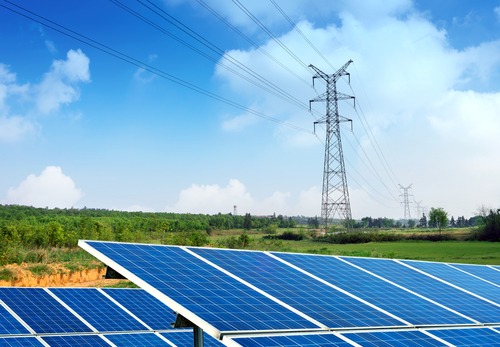New FERC commissioner says state regulators won’t be sidelined in grid expansion

The newest commissioner at the Federal Energy Regulatory Commission (FERC) said this week that he expects state utility regulators to handle a large share of the heavy lifting in the overhaul of the nation’s power grid to address the ongoing expansion of renewable energy while also improving its resiliency.
Mark Christie, a veteran regulator who is completing his first year at FERC, said state regulatory commissions will be making scores of decisions on new transmission lines based on local needs and obstacles rather than turning such matters over to federal agencies that could brush aside local objections in order to move such projects along more quickly.
“I believe it should be state regulators approving transmission lines, period,” Commissioner Christie said during a video conference on grid expansion convened by the U.S. Chamber of Commerce Global Energy Institute on Wednesday.
Christie spent nearly 17 years on the Virginia State Corporation Commission before being nominated to FERC by President Donald Trump in 2020. He explained that while other agencies and industries could stick to the grand strategies of transitioning the grid to a nationwide highway for renewable power, it was still the state commissions that best understood the energy needs of their constituents and had the responsibility to pass costs onto those same voters.
“State commissioners are the ones who have to approve the retail rate, and that is what shows up on the customers’ bills,” said Christie.
Christie and other participants in the Chamber’s conference said expanding the grid based solely on the direction of FERC or some other national entity was impossible in the United States given the historic role that state, local and tribal officials play in energy transmission, particularly siting authority over new lines that might simply pass through a particular state and deliver power to a different state.
Advocates of renewable energy have bemoaned the sometimes-grinding approval process for new transmission corridors as well as natural gas pipelines. But that is a fact of life that comes with the task of reorienting a “legacy” grid that has been around for decades, bringing high loads of conventional power from Point A to Point B, usually within an individual state.
“We aren’t like a lot of countries; we have a lot of jurisdictions out there,” said U.S. Rep. Bob Latta (R-OH), a member of the U.S House Energy and Commerce Committee. “You want to make sure the regulations are such that the different jurisdictions can work with them.”
The “new” grid will not only have a higher capacity to accommodate increased electrification but will also tie in with widely scattered generation that could be located in remote areas where wind and solar resources are plentiful, even offshore. Christie noted it also would be up to state regulators to pass final judgment on power lines proposed by private companies to bring power to the market. “Is it needed, which includes cost, and the second question is the route,” he said, adding that regulators “know their states and the challenges of their states.”
It also will be up to state regulators to help guide projects that will improve the resiliency of the grid to withstand wildfires, windstorms, cyberattacks and other disruptive events.
“We need to harden the grid against weather,” Christie said, noting that states have the dual responsibility of seeing to it that utilities are doing what is necessary to keep the lights on, including vegetation management and construction of sturdier and modernized infrastructure, while also keeping the costs from being an undue burden on ratepayers. “These are all costly and need to be vetted to see if they are worth the cost,” he said.
Scott Aaronson, senior vice president of Security and Preparedness at the Edison Electric Institute (EEI), said state regulators had the opportunity to examine resiliency plans and assure the public that they are worth the cost while also going to bat for the utilities in their jurisdictions that might be seeking federal funding for specific grid resiliency. “The federal government and the states each has a role and getting money out thoughtfully is going to be a joint effort, including helping regulators understand the value of these resilience measures and how they can benefit their customers,” Aaronson said.
But expanding and improving the capabilities of the U.S. power grid is already underway, and not in a top-down manner micromanaged by Washington.
Christie said, “There is a lot we need to do to harden the grid, but the data shows America is already investing in the grid and that is having an impact on rates.”
